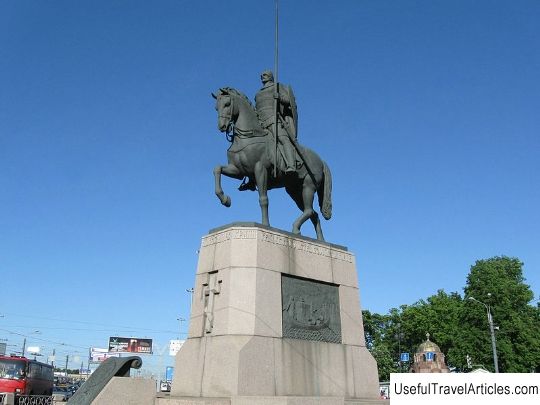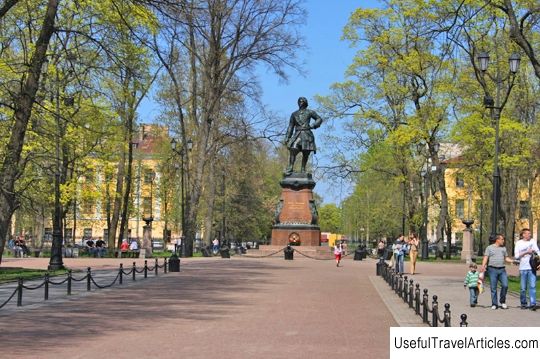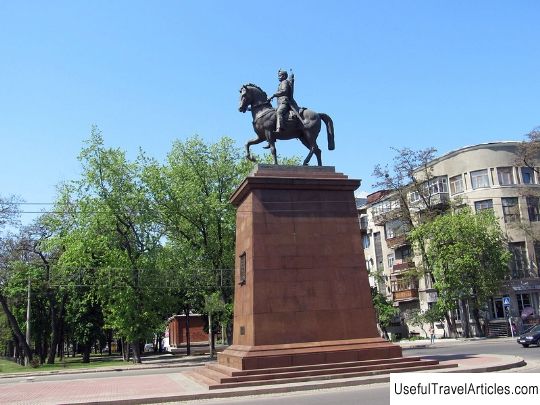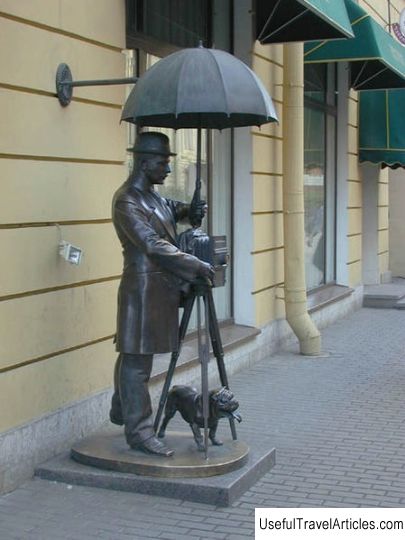The Bronze Horseman - a monument to Peter I description and photo - Russia - St. Petersburg: St. Petersburg
Rating: 8,5/10 (6994 votes) 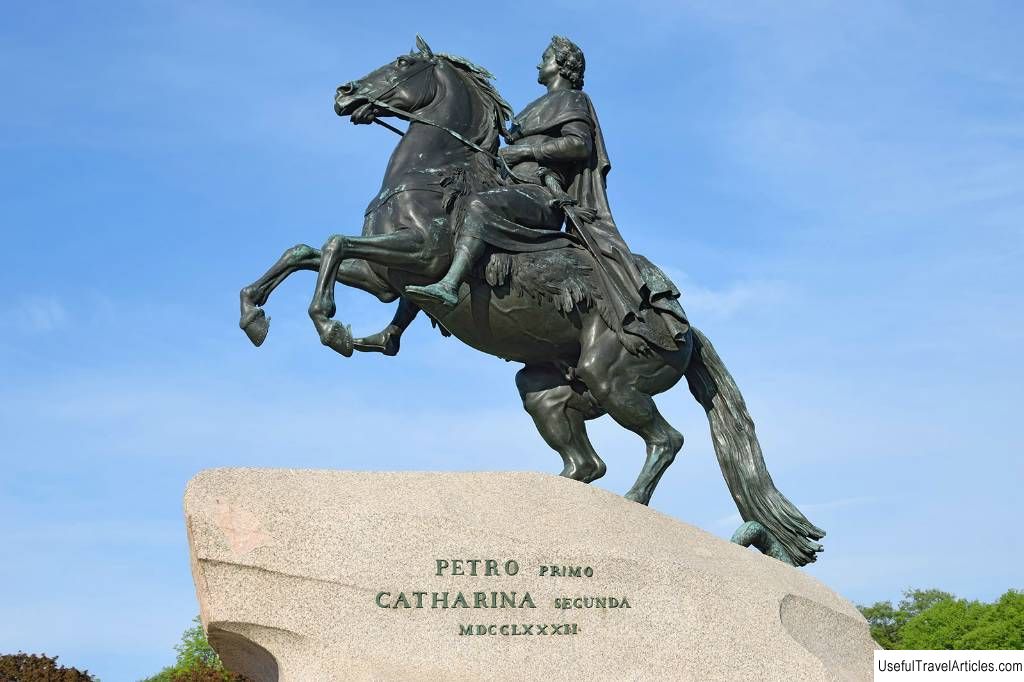
The Bronze Horseman - a monument to Peter I description and photos - Russia - St. Petersburg: St. Petersburg. Detailed information about the attraction. Description, photos and a map showing the nearest significant objects. Photo and descriptionAmong the most famous sights of St. Petersburg, a special place is occupied by the monument to Peter the Great, also known as the Bronze Horseman. Anyone who is well acquainted with Russian literature, especially with the works of the classics, will surely easily remember several works where this attraction is assigned one of the main roles in the plot. By the way, in fact, the sculpture is made of bronze, and it is called copper again thanks to the classic of Russian literature - Alexander Pushkin. His work "The Bronze Horseman" is one of the vivid examples of how the famous sculpture inspired (and continues to inspire) poets and prose writers. The monument was opened in the early 80s of the 18th century. It is located on the Senate Square. Its height is about ten and a half meters. History of the creation of the monumentThe author of the sculpture model is Etienne Maurice Falconet, a sculptor specially invited to Russia from France. While working on the model, he was allocated housing near the palace, it was located in the former stable. His remuneration for his work, according to the contract, amounted to several hundred thousand livres. The head of the statue was blinded by his student Marie-Anne Collot, who came to Russia with her teacher. At the time, she was in her early twenties (and her teacher was over fifty). For her excellent work she was admitted to the Russian Academy of Arts. She was also given a life pension. In general, the monument is the work of several sculptors. The production of the monument was started in the late 60s of the 18th century and completed in the 70s. When the French sculptor had not yet created a model of the equestrian statue, there were different opinions in society as to exactly how the monument should look. Someone believed that the sculpture should depict the emperor standing in full growth; others wished to see him surrounded by allegorical figures symbolizing various virtues; still others believed that a fountain should be opened instead of sculpture. But the guest sculptor rejected all of these ideas. He did not want to depict any allegorical figures; he was not interested in the traditional (for that time) appearance of the victorious sovereign. He believed that the monument should be simple, laconic, and he should praise, first of all, not the military merits of the emperor (although the sculptor recognized and highly appreciated them), but his activities in the field of lawmaking and creation. Falcone wanted to create the image of the sovereign benefactor, in this he saw his main task. According to one of the many legends associated with the monument and the history of its creation, the author of the sculpture model even spent the night in the former bedchamber of Peter the Great, where the ghost of the first Russian emperor appeared to him and asked questions. What exactly was the ghost asking the sculptor about? We do not know this, but, as the legend says, the answers seemed quite satisfactory to the ghost. There is a version that the bronze horse reproduces the appearance of one of the favorite horses of Peter the Great - Lisette. This horse was bought by the emperor from a random dealer at a fabulous price. This act was completely spontaneous (the emperor really liked the brown horse of the old Karabakh breed!). Some historians believe that he named her Lisette after one of his favorites. The horse served the owner for ten years, obeyed only him, and when it died, the emperor ordered to make a stuffed animal. But in fact, this scarecrow has nothing to do with the creation of the famous monument. Falcone made sketches for the sculpture model from the Oryol trotters from the imperial stables, their names were Brilliant and Caprice. A guard officer mounted one of these horses, jumped on it onto a special platform and raised the horse on its hind legs. At this point, the sculptor quickly made the necessary sketches. Making a pedestal According to the original idea of the sculptor, the pedestal of the monument was supposed to resemble a sea wave. Not hoping to find a solid stone of a suitable size and shape, the creator of the monument planned to make a pedestal from several granite blocks. But an unexpectedly suitable stone block was found. A huge stone, on which the sculpture is currently installed, was discovered in one of the villages in the vicinity of the city (today this village does not exist, its former territory is within the city limits). The lump was known among the locals as the Thunder Stone, since in ancient times it was struck by lightning. According to another version, the stone was called the Horse, which is associated with ancient pagan sacrifices (horses were sacrificed to otherworldly forces). According to legend, a local holy fool helped the French sculptor find the stone. The stone had to be removed from the ground. A fairly large pit was formed, which was instantly filled with water. This is how a pond appeared, which still exists today. Winter time was chosen for the transportation of the stone block, so that the frozen soil could withstand the weight of the stone. Its relocation lasted more than four months: it began in mid-November and ended at the end of March. Today some "alternative historians" argue that such transportation of the stone was technically impossible; meanwhile, numerous historical documents testify to the opposite. The stone was taken to the seashore, where a special pier was built: from this pier, the stone block was loaded onto a ship built to transport it. Although the stone was delivered to the pier in the spring, loading began only with the arrival of autumn. In September, the boulder was delivered to the city. To remove it from the ship, it had to be submerged (it sank onto piles, which had been specially driven into the river bottom). Stone processing began long before its arrival in the city. It was stopped at the behest of Catherine II: having arrived at the place where the stone was then, the empress examined the block and ordered to stop processing. But still, as a result of the work carried out, the size of the stone was significantly reduced. The casting of the sculptureThe casting of the sculpture began soon. The foundry worker, who had specially arrived from France, could not cope with his work, he had to be replaced with a new one. But, according to one of the legends about the creation of the monument, the problems and difficulties did not end there. According to legend, during the casting, a pipe broke down through which molten bronze was poured into the mold. It was only thanks to the skill and heroic efforts of the foundry that the lower part of the sculpture was saved. The master, who prevented the spread of the flame and saved the lower part of the monument, was burned, his eyesight was partially damaged. Manufacturing the upper parts of the monument was also fraught with difficulties: they could not be cast correctly, and had to be re-cast. But during the re-casting, serious mistakes were again made, due to which later cracks appeared in the monument (and this is no longer a legend, and documented events). Almost two centuries later (in the 70s of the XX century), these cracks were discovered, the sculpture was restored. LegendsLegends about the monument very quickly began to appear in the city. The process of myth-making associated with the monument continued in the following centuries. One of the most famous legends tells about the period of the Patriotic War, when the threat of the capture of the city by Napoleonic troops arose. The emperor then decided to remove the most valuable works of art from the city, including the famous monument. A large amount of money was even allocated for its transportation. At this time, a certain major by the name of Baturin made a meeting with one of the close friends of the emperor and told him about a strange dream that haunted the major for many nights in a row. In this dream, the major always found himself in the square near the monument. The monument came to life and descended from the pedestal, and then moved towards the emperor's residence (it was then on the Stone Island). The emperor came out of the palace to meet the rider. Then the bronze guest began to reproach the emperor for inept management of the country. The rider ended his speech like this: "But as long as I stay in my place, the city has nothing to fear!" The story of this dream was passed on to the emperor. He was amazed and ordered not to take the monument out of the city. Another legend tells about an earlier period of time and about Paul I, who was not yet emperor at that time. Once, walking around the city with his friend, the future sovereign saw a stranger wrapped in a cloak. The unknown approached them and walked beside them. Due to the hat pulled low over his eyes, the stranger's face was impossible to see. The future emperor drew the attention of his friend to this new companion, but he replied that he did not see anyone. The mysterious fellow traveler suddenly spoke and expressed his sympathy and participation to the future sovereign (as if predicting the tragic events that later occurred in the life of Paul I). Pointing to the place where the monument was subsequently erected, the ghost said to the future sovereign: "Here you will see me again." Then, saying goodbye, he took off his hat and then the shocked Pavel managed to make out his face: it was Peter the Great. During the blockade of Leningrad, which, as you know, lasted nine hundred days, a legend appeared in the city: as long as the Bronze Horseman and monuments to the great Russian commanders are in their places and not sheltered from bombs, the enemy will not enter the city. However, the monument to Peter the Great was still protected from bombing: it was sheathed with boards and surrounded by sandbags on all sides.               Topic: The Bronze Horseman - a monument to Peter I description and photo - Russia - St. Petersburg: St. Petersburg. |
